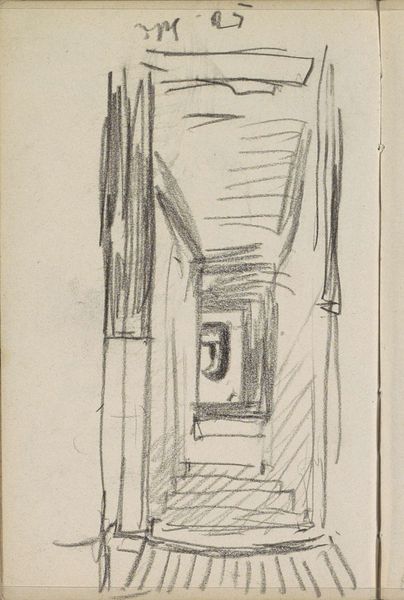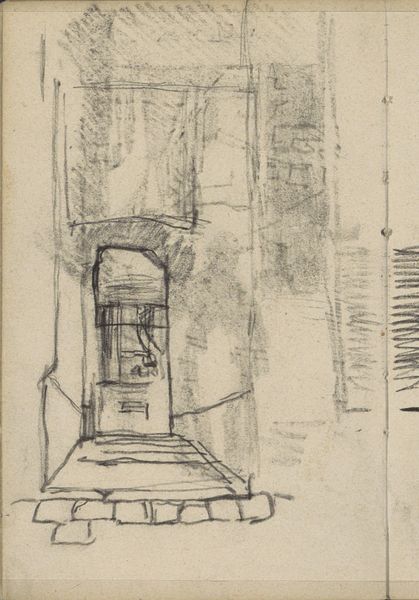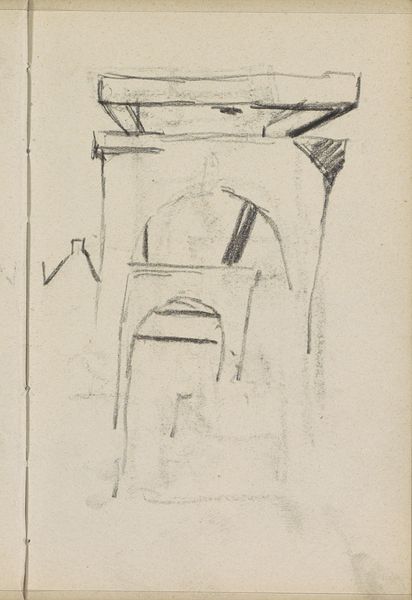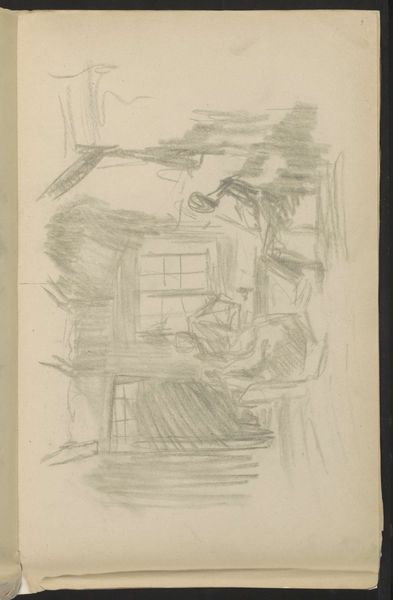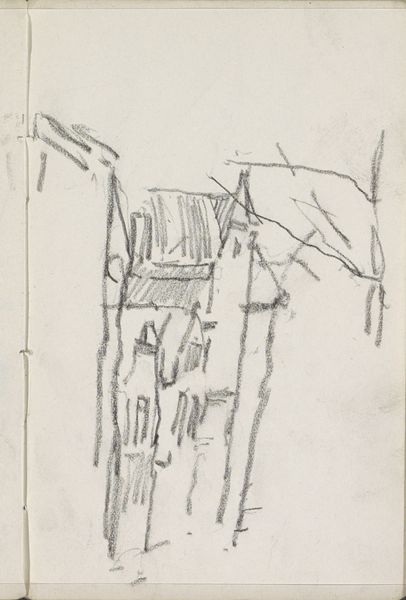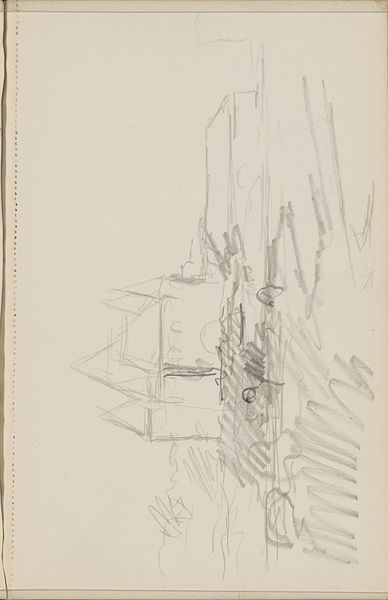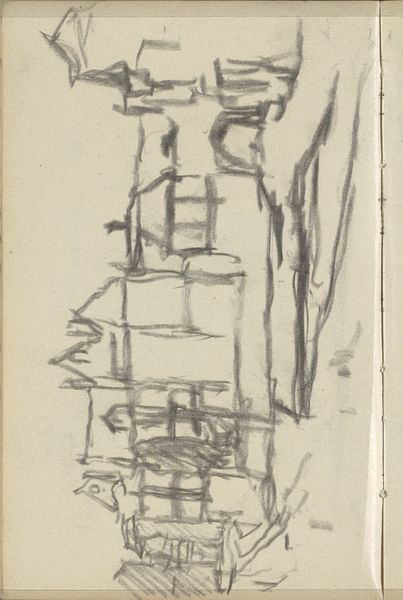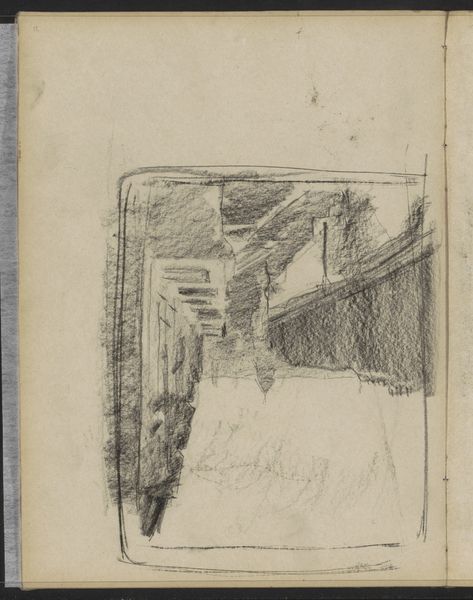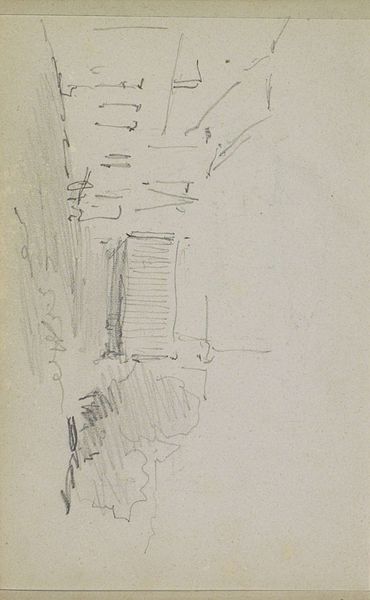
Copyright: Rijks Museum: Open Domain
Curator: Here we have "Poort in de Baan te Rotterdam," a pencil drawing by George Hendrik Breitner, circa 1902, housed here at the Rijksmuseum. Editor: Immediately, the sharp lines and severe angles give it this… industrial anxiety. Almost claustrophobic, despite being outdoors, I think. What do you make of the space he’s capturing here? Curator: Structurally, it's fascinating. The linear perspective pulls the viewer into the scene, focusing our eye on that distant archway. The pencil strokes themselves—short, hurried—suggest a fleeting moment, characteristic of impressionism. But unlike Monet’s vibrant impressions of light, Breitner offers a starker, almost brutal, vision. Editor: Right? It's like peering down a grimy, neglected hallway rather than strolling through a sun-drenched boulevard. You feel the weight of the stone. It’s almost like Breitner found beauty in the mundane grit of urban life; a very…Dutch characteristic, I think. Curator: Precisely. Breitner was known for capturing the raw energy of city life, moving away from the idealized landscapes that dominated earlier Dutch art. Look how the architectural elements form these repeating, rigid shapes. It conveys the sense of Rotterdam transforming with growing industrial infrastructure. Editor: Makes me think, what secrets this narrow space holds? Was it noisy? Did people hurry down this passage, eager to arrive somewhere else? What would it sound like to walk through here… Curator: And I am particularly struck by the play of light and shadow here. The doorway beyond is enveloped in shadow which renders it inscrutable, in effect it withholds easy accessibility—it beckons from afar yet remains beyond immediate grasp. Editor: Almost menacing? Yeah I agree; as the eye strains forward to make out forms and shapes, all clarity suddenly devolves back into charcoal haziness. We strain forward to perceive reality... only to find obfuscation and more dark shadings. Spooky! Curator: Exactly, it offers an incomplete reality. It also acts to showcase his technique—masterfully rendered to invoke rather than illustrate—an aspect of the Impressionistic impulse. This incomplete quality evokes deeper thought within us as well. Editor: Definitely gives you that feeling… the unfinished… the search to finish what can't be completed… That's something I see and love about many pieces, but it feels extremely powerful to think about in context of an older, possibly simpler time. Thanks! Curator: My pleasure. Thank you for your fascinating insights into the context of urban grit; I certainly have to appreciate that point even more deeply now as well.
Comments
No comments
Be the first to comment and join the conversation on the ultimate creative platform.
